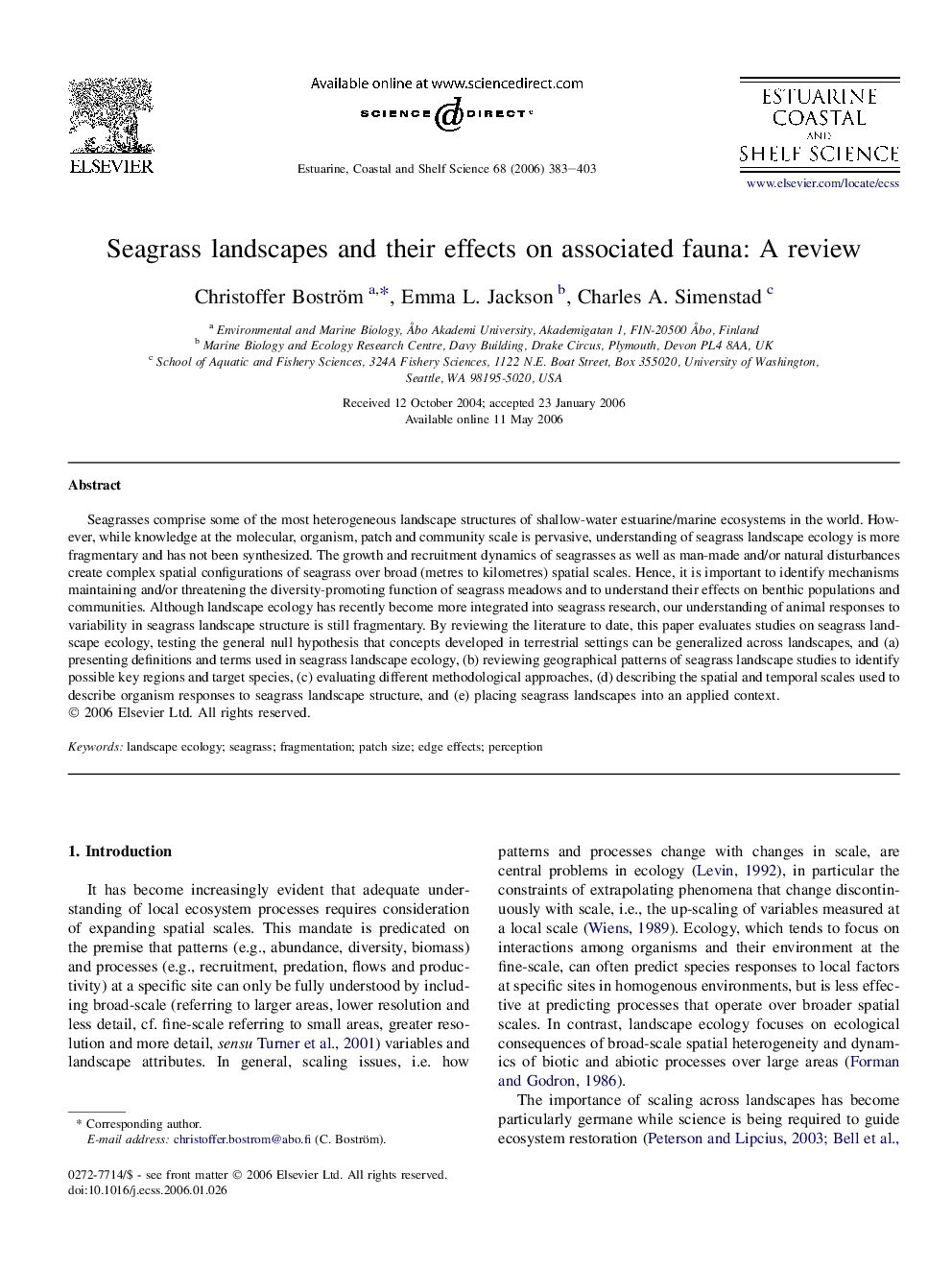| Article ID | Journal | Published Year | Pages | File Type |
|---|---|---|---|---|
| 4542490 | Estuarine, Coastal and Shelf Science | 2006 | 21 Pages |
Seagrasses comprise some of the most heterogeneous landscape structures of shallow-water estuarine/marine ecosystems in the world. However, while knowledge at the molecular, organism, patch and community scale is pervasive, understanding of seagrass landscape ecology is more fragmentary and has not been synthesized. The growth and recruitment dynamics of seagrasses as well as man-made and/or natural disturbances create complex spatial configurations of seagrass over broad (metres to kilometres) spatial scales. Hence, it is important to identify mechanisms maintaining and/or threatening the diversity-promoting function of seagrass meadows and to understand their effects on benthic populations and communities. Although landscape ecology has recently become more integrated into seagrass research, our understanding of animal responses to variability in seagrass landscape structure is still fragmentary. By reviewing the literature to date, this paper evaluates studies on seagrass landscape ecology, testing the general null hypothesis that concepts developed in terrestrial settings can be generalized across landscapes, and (a) presenting definitions and terms used in seagrass landscape ecology, (b) reviewing geographical patterns of seagrass landscape studies to identify possible key regions and target species, (c) evaluating different methodological approaches, (d) describing the spatial and temporal scales used to describe organism responses to seagrass landscape structure, and (e) placing seagrass landscapes into an applied context.
